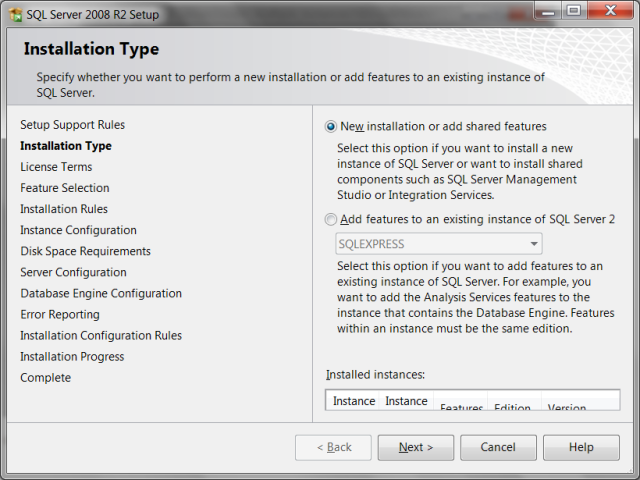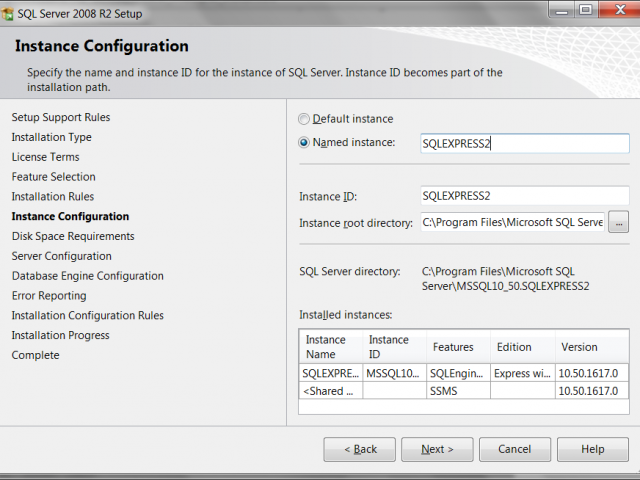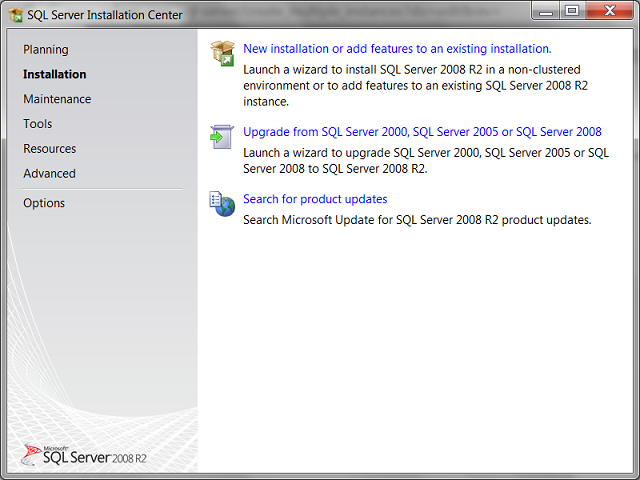Creating Multiple SQL Server Instances on Single Server
When you install SQL Server, the installation by default creates an instance of SQL Server. But the question is how to create multiple instances?
Once you have installed SQL Server and have the default (or named) instance, start the setup again to create a new instance.
When you run SQL Server 2008 R2 Express setup, the following screen appears:
Click “New installation or add features to an existing installation”, from the above window then, the following screen appears:

IN the above screen, you can see that SQLEXPRESS instance already exists on the machine, it was created by the first installation, to install another Instance of SQL server 2008 R2, now select “New installation or add shared features”. Then click Next and accept the License Agreement.
Then select features you want to install for the new instance.
After that the installation lets you specify the name of your new instance (SQLEXPRESS2 was chosen in this example):

Finally, Click Next to create the new instance and perform the remaining setup steps. You need to repeat these steps to create any required number of instances.
Once you have installed SQL Server and have the default (or named) instance, start the setup again to create a new instance.
When you run SQL Server 2008 R2 Express setup, the following screen appears:
 |
| SQL Server 2008 R2 Installation Screen |

IN the above screen, you can see that SQLEXPRESS instance already exists on the machine, it was created by the first installation, to install another Instance of SQL server 2008 R2, now select “New installation or add shared features”. Then click Next and accept the License Agreement.
Then select features you want to install for the new instance.
After that the installation lets you specify the name of your new instance (SQLEXPRESS2 was chosen in this example):

Finally, Click Next to create the new instance and perform the remaining setup steps. You need to repeat these steps to create any required number of instances.










